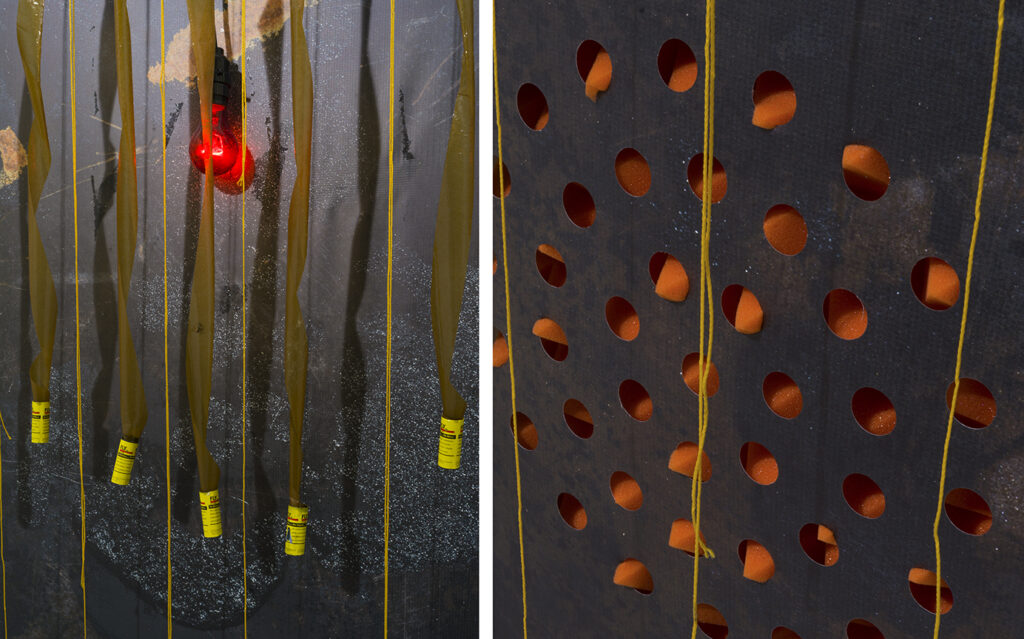The Pink Opaque
Pink is a loaded color, a color assigned sexual and gender associations through contemporary societal constructs. While we think of pink as a feminine color that wasn’t always the case. For example, up until the early 1940’s young boys were exclusively dressed in pink. Coincidentally it was also during the 1940s that Nazis began using a downward pink triangle as a badge of shame to label homosexuals in concentration camps, and later in the 1980s gay men reclaimed that symbol and turned pink triangles upside down during protests at the height of the AIDS crisis.
Pink is also the color of our raw flesh, our tissues, our organs. Pink is everything that is plump, slick, shiny, delicate, and fleshy. It represents the inside of us and in turn our most vulnerable parts. The holes to the inside of our bodies are all pink regardless of our gender and race. Pink is our commonality.

I make holes in my work to find the pink. Holes which are simultaneously suggestive of body parts, wounds and by extension sex and gender. I’m interested in holes both materially and metaphorically. My work uses them to punch through the opaque surface of the skin, to find a physical and emotional vulnerability underneath the surface. I use the soft plasticity of photographs printed on vinyl to represent this skin and then use the photographic as object and ground for sculptural transfiguration.
Typically, we trust photography because of its realism but the photographic ground in my work is only a representation of reality but not reality. Photography is opaque in that its indexical quality simultaneously represents but at the same time distorts what is real. Because the printed photograph is selective and doesn’t allow you to see through it things intentionally become secret or complicated. Images don’t make you dream, they are the dream. Images have become our true sexual objects, possibly the only real objects of our desire.

I want to challenge mediums and confuse metaphors by incorporating found objects onto the photographic ground. I use dramatic shifts in scale, context, and materiality to infer new meaning. Often the objects are metaphors for very personal and vulnerable situations or promote connections between material details and their subconscious associations. The meaning is in the materiality.
Provocative, humorous, textural, masculine, and feminine: the undercurrent of the exotic in the mundane. Everyday objects, once ordinary and familiar, draw you in with the promise of comfort but once you get close the illusion falls away, revealing an uncertain, tricky, and sometimes dangerous world. Hard and soft mirrors the idea that things which can bring us comfort and reassurance—a soft bed, the comfort of marriage, a child’s toy, a towel to keep us clean—can also be mortal traps that chain us, strap us, dismember us—or even eviscerate us. Is the pink our desire for safety, pleasure, and comfort itself? If so, is the pink the fatal weakness which leaves us vulnerable to the undercurrent of human darkness?
 2021 How Many Bars Of Soap Do I Have To Drop Before You Love Me? – 5’x5′ vinyl photograph with found objects
2021 How Many Bars Of Soap Do I Have To Drop Before You Love Me? – 5’x5′ vinyl photograph with found objects
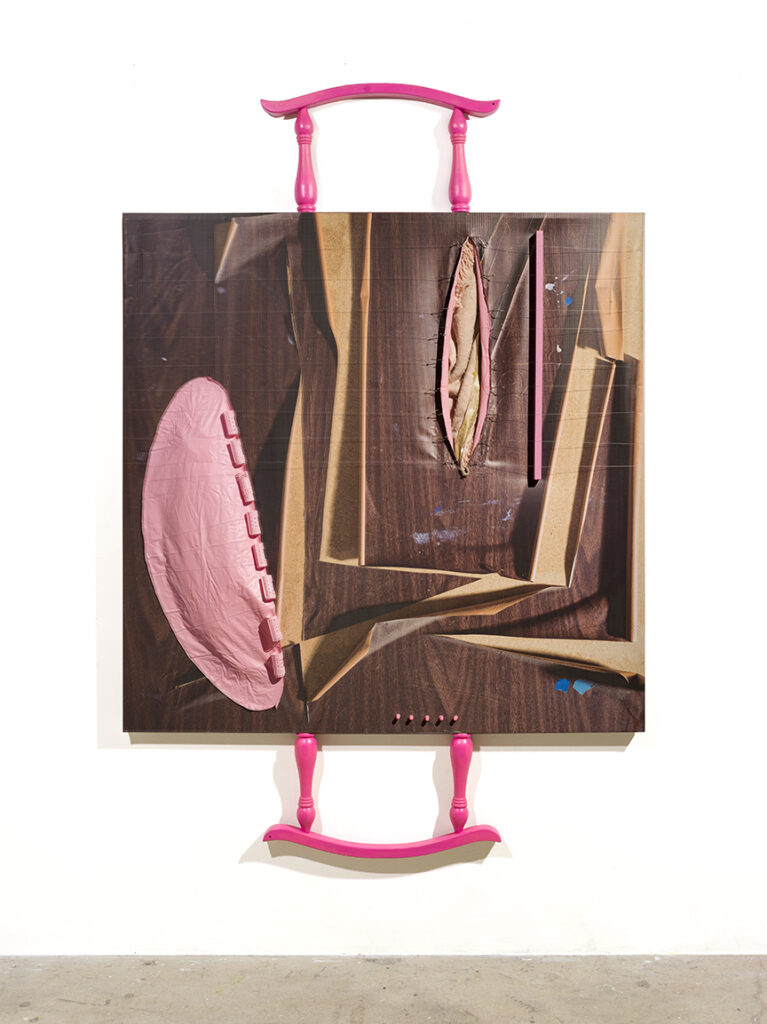 2021 Madame Butterfly – 5’x5′ vinyl photograph with found objects
2021 Madame Butterfly – 5’x5′ vinyl photograph with found objects

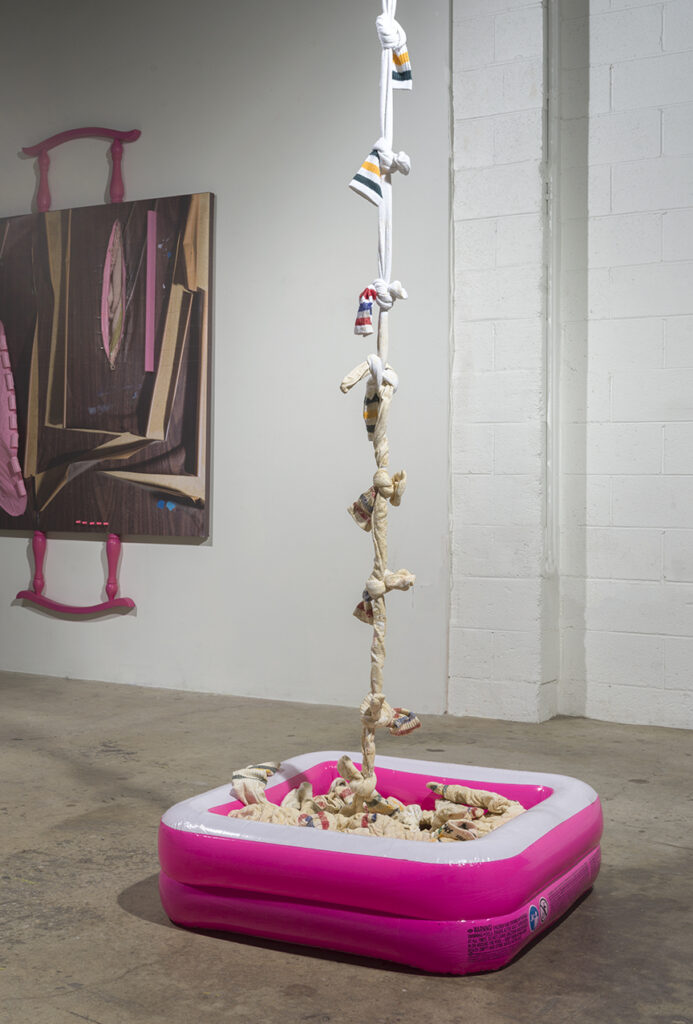 2121 Despair and Ecstasy – 3’x3’x20′ vinyl baby pool with tube socks
2121 Despair and Ecstasy – 3’x3’x20′ vinyl baby pool with tube socks

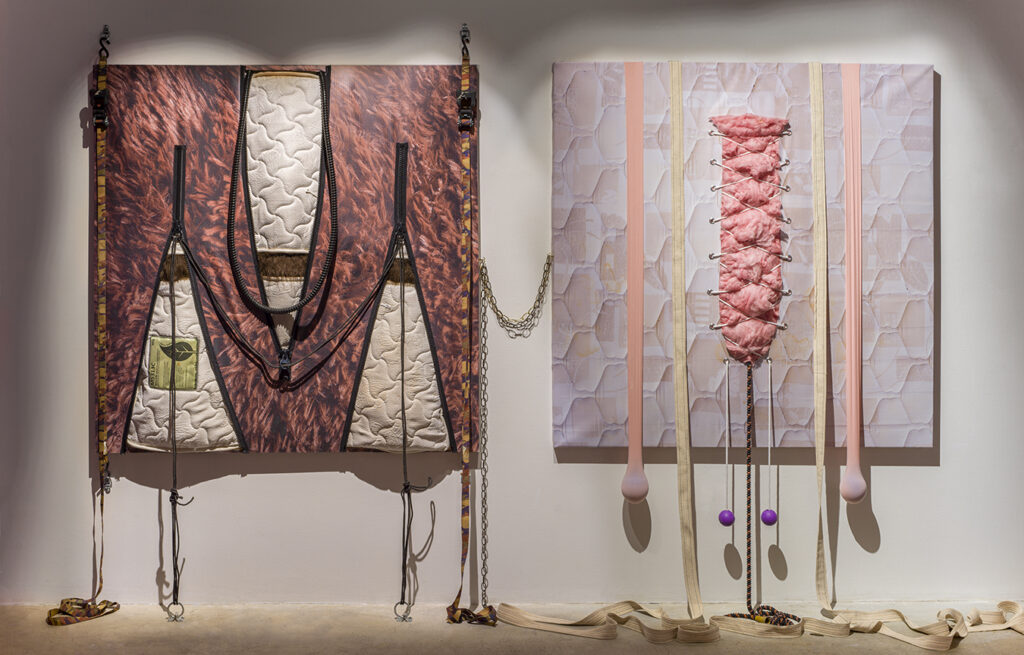
2021 Sweet Dreams 1 + Sweet Dreams 2 = Marriage – 2 5’x5′ vinyl photographs with found objects
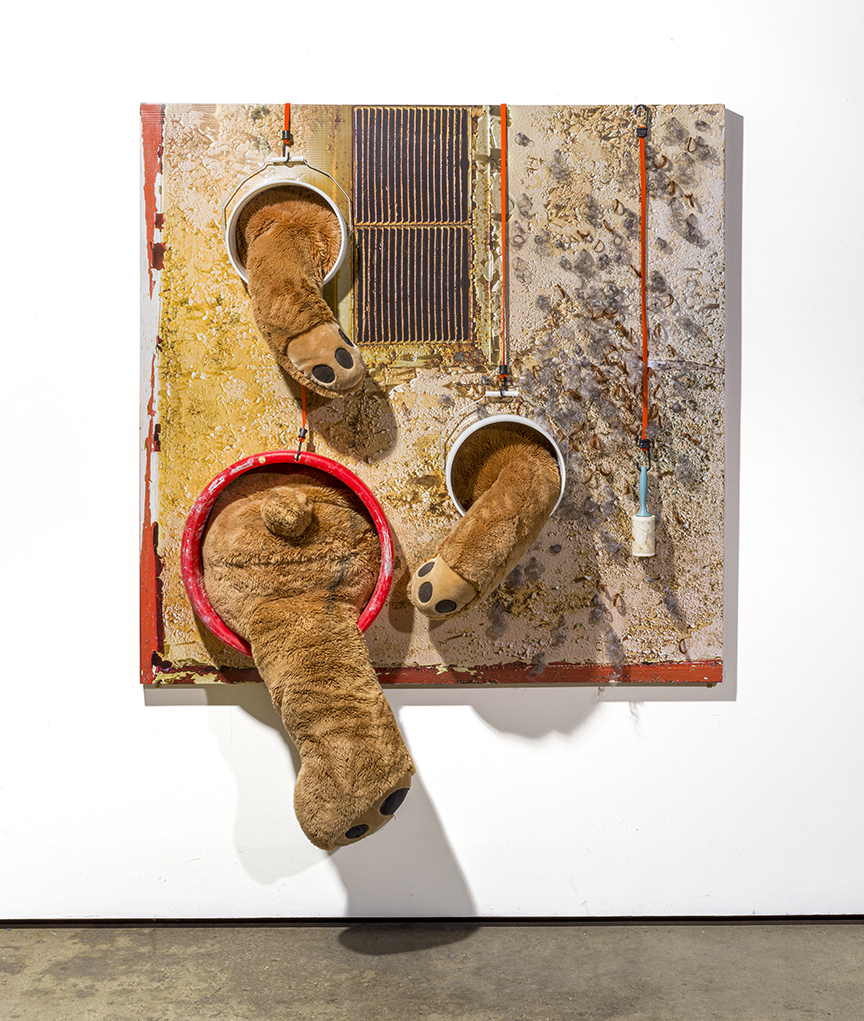 2021 Hairy Old Bear – 5’x5′ vinyl photograph with found objects
2021 Hairy Old Bear – 5’x5′ vinyl photograph with found objects

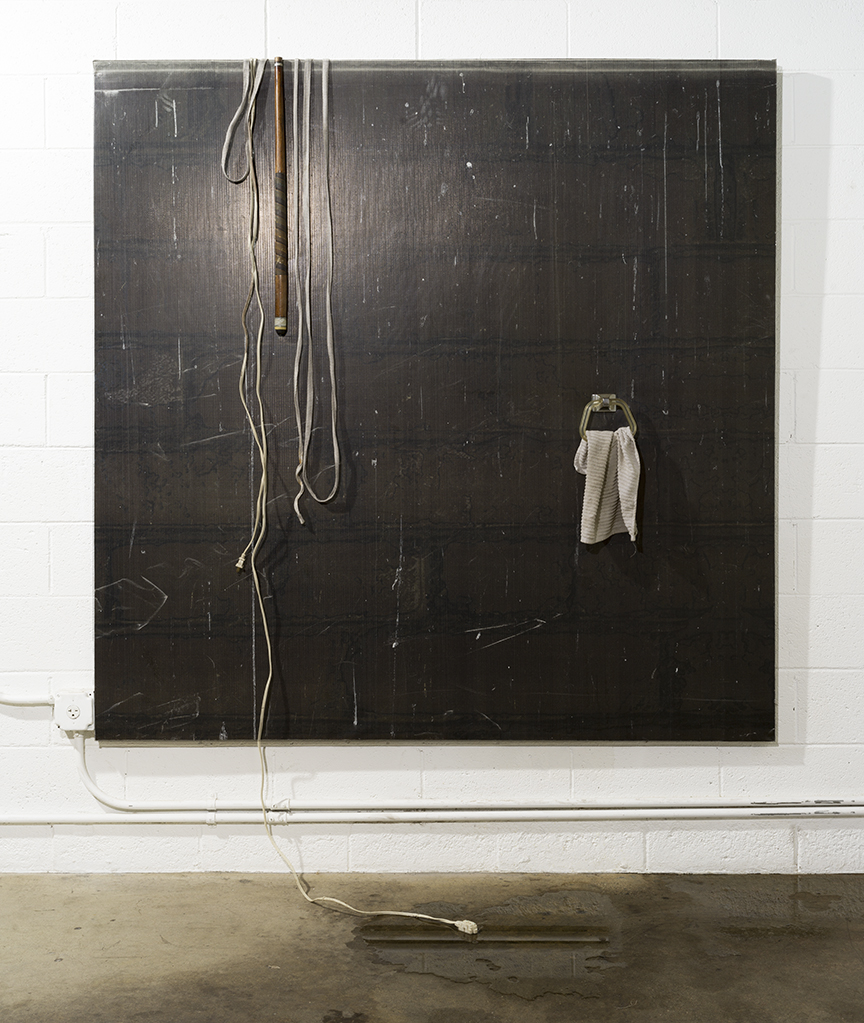 2121 Site – 6’x6′ used vinyl billboard with found objects and liquid
2121 Site – 6’x6′ used vinyl billboard with found objects and liquid
 2121 Untitled – 5’x5′ photograph with found objects
2121 Untitled – 5’x5′ photograph with found objects

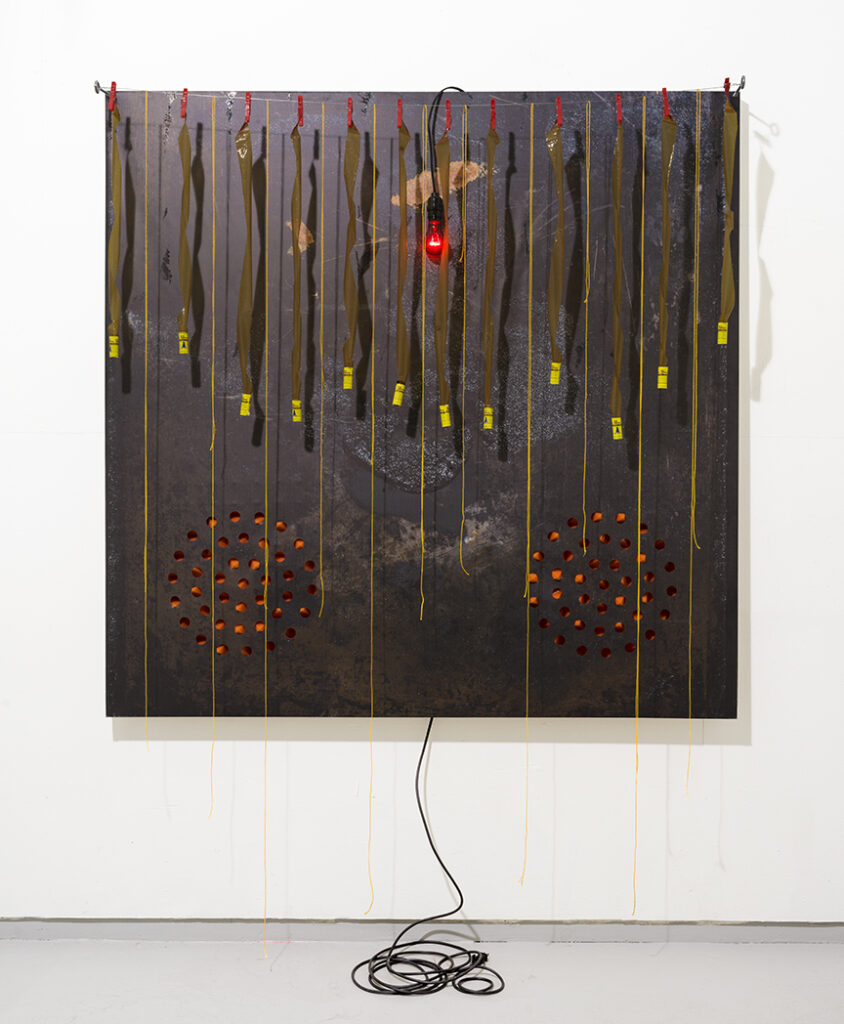 2021 Darkroom – 5’x5′ vinyl photograph with found objects
2021 Darkroom – 5’x5′ vinyl photograph with found objects
